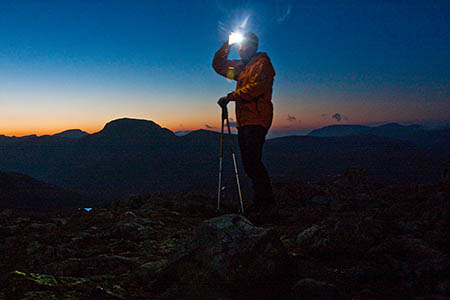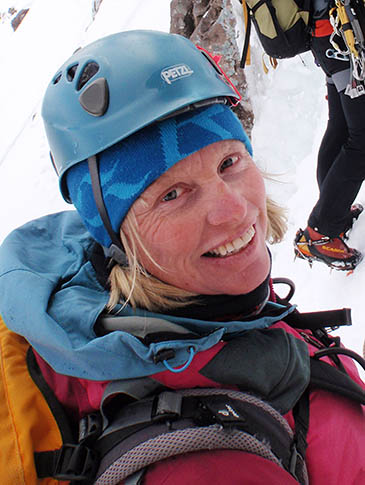Experts are warning hillgoers not to get caught out as the clocks go back this weekend, and shorter daylight hours mean careful mountain planning is needed.
British Summer Time ends at 2am on Sunday, but daylight is already in short supply for long journeys in the hills.
Wintry showers have already dusted some of the Scottish mountains and temperatures are falling as summer becomes a distant memory.
Walkers and mountaineers are being urged to pack the right gear and wear the right clothing for the hills.
Phil Benbow of Llanberis Mountain Rescue Team, which covers Snowdon, one of the UK’s most popular mountain destinations, said: “”There is a significant increase in the number of calls to rescue teams when the clocks go back, due to people becoming caught out by the reduction in daylight hours.
“At this time of year it is important to carry a working torch, even if you plan to get back before dark, and don’t rely on your mobile phone and the rescue team to get you out of trouble.”
The Llanberis team is a member of the Mountain Safe Partnership, which issued the following five points of advice:
- Prepare well. Have the right equipment with you for the best and worst-case scenario. You’ll need a map and compass, torch, food and drink, whistle, first aid kit and a fully charged mobile phone.
- Have the latest weather and ground information. Check the Met Office Mountain Weather forecast before you set out and be prepared to turn back if the weather worsens – the mountains will still be here for you to enjoy the next time you visit.
- Dress appropriately. The weather and temperature can change dramatically between the foot of the mountain and the summit. You’ll need strong walking boots, several layers of clothing including warm ones, gloves, a hat and waterproof jacket and trousers.
- Know where you’re going. Plan your route before setting off and ask for local advice. Have a map and compass and know how to use them and choose a route which is suitable for you and your group’s experience and fitness level. Find out how long it should take and when it gets dark.
- Know your limits. While being very enjoyable, getting out into the mountains can be hard work. Challenge yourself but be aware of the fitness levels, and experience of the group as a whole, not just your own.
Mr Benbow’s advice was echoed by Heather Morning, mountain safety adviser with the Mountaineering Council of Scotland.
She said: “Shorter daylight hours, dropping temperatures and the first dusting of snow on the hill are obvious indicators for the hillwalker to think about extra kit in their rucksacks.
“A head torch – and spare battery – is crucial in case your route takes a wee bit longer than expected.
“It’s also well worth considering putting away those lightweight, bendy summer boots and changing into a more rigid pair that will accommodate crampons.
“Now is the time to add a pair of crampons and an ice axe to the essential kit list, as well as making sure you know how to use them.”
She said extra layers should be considered, with the addition of a synthetic duvet jacket and emergency shelter stored in the bottom of your rucksack just in case you are stationary on the hill for any length of time.
Hats, gloves – at least two pairs are recommended – and face protection such as a Buff will all add to comfort on the hill as the winter season gets underway, she said.
Ms Morning added that now was also a good time for climbers and walkers to consider whether they could benefit from extra training.
“Dealing with winter conditions and avalanche avoidance isn’t just a case of buying all the right gear,” she said. “The right knowledge and experience is vital.”

